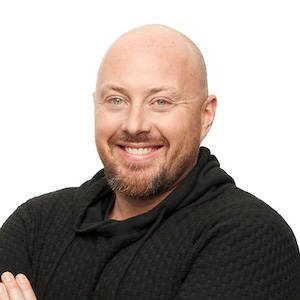Kin Insurance co-founder and CEO Sean Harper is aiming for the big leagues for his company, an InsurTech home insurance startup focused initially on catastrophe-prone regions. He envisions Kin, which launched in 2016, as becoming “iconic” – a significant competitor that plays a crucial role in its customers lives. A SPAC transaction is intended to help make that happen.

The Chicago-based company recently announced plans to go public through a merger with Omnichannel Acquisition Corp, a Special Purpose Acquisition Company led by investor and former “Shark Tank” judge Matt Higgins. As Bloomberg reported, the move will, in part, give Kin $242 million in cash to fund growth. Kin, which operates currently in Florida, California and Louisiana, also recently agreed to buy an inactive insurer shell company licensed to do business in approximately 43 states.
With those two moves, Kin could jump much farther ahead of many of its rivals.
Carrier Management recently asked Harper via email to elaborate about the benefits and risks of relying on a SPAC to propel a startup’s expansion. He also noted the gains Kin will see by acquiring a shell company with insurance licenses already in place. His answers are below, with some light edits for length.
—————————————————————————————————————–
Q: Many InsurTechs have gone public through traditional IPOs, but use of SPACs has obviously increased in recent months. Why did you choose the SPAC route? Was it more cost effective? Lower-risk?
Harper: Root and Lemonade were both traditional (IPOs) while Metromile, Kin and Hippo are SPACs. There may be more out there as well, those are just the ones I know off the top of my head. I think a lot of tech companies have been going public via SPAC because there is a market for it and it is time-efficient.
I do think the market has gotten worse since the SPAC peak in the winter and [that] means less companies are going public via SPAC and for those who are, it is taking longer. The biggest issue in the SPAC market is that there is a finite ecosystem of investors who invest in the PIPE (private investment in a public entity) that is basically required to merge with a SPAC. Because it’s a private investment and illiquid until the SPAC closes (which can take 3-6 months) a lot of firms don’t want to do them or are limited in the amount they can deploy. That finite pool of money got deployed very fast and because the SPACs have been slower to close, that capital has not yet been recycled into new deals. We were able to raise a strong PIPE from some very helpful investors but I think a lot of deals have been having a harder time.
Q: What do you see as the benefits to a SPAC, and what are the risks?
Harper: It can be pretty risky for companies that are a long way from being profitable or who have very untested business models to go public. The market is very aggressive right now in funding speculative businesses – for example you have some pre-revenue companies going public right now. That’s ok just so long as they either a., raised enough money to eventually get profitable or b., the market still has the same risk appetite when they do run out of money so they can raise more. All the InsureTechs that have gone public are more mature than that, they all have revenue at least, but some have troubling unit economics and may not have raised enough to eventually get to profitability, which can be risky.
For us, the benefit of going public is that our unit economics are quite good – our LTV (lifetime value of a customer) is much higher than our CAC (customer acquisition cost), and when you have an equation like that the rational thing to do is apply more money and do it at an ever increasing scale.
Q: Will there be more pressure when you’re answerable to shareholders?
Harper: We are already answerable to our VC shareholders which creates a lot of pressure in its own right. Being public does bring a level of exposure that increases the pressure.
Q: Do you recommend SPACs as the way to go for other InsurTechs seeking to hit the public markets? Why or why not?
Harper: For us the SPAC has already been really great because the members of that SPAC are in a unique position to help us:
We are a direct-to-consumer business and they are very good at consumer marketing. Matt [Higgins, the “Shark Tank judge who leads the SPAC that is acquiring Kin] literally teaches the course on omnichannel marketing at Harvard. [PIPE investor Gary Vaynerchuk, CEO of VaynerMedia]has written the book on social media marketing and founded one of the most innovative marketing firms in the world.
The management team of Related, one of the largest real estate operators, came into the deal. Florida is a big state for us and they have some unique assets there – for example, they own the Dolphins.
Q: Wy did you buy a widely-licensed shell company for your expansion? How much time and money did this save you?
Harper: Our reciprocal exchange got its license in the summer of 2019, because of how seasoning requirements work it would have been the summer of 2022 before we could expand that carrier to the rest of the country. Getting the shell moved up our timeline a lot, and it is also useful to have two sets of licenses.
Q:What are your goals as a company – to become quite large? Remain standalone?
Harper: Homeowners insurance has not yet been revamped to be tech forward and direct-to-consumer, unlike renters and auto. That is a huge opportunity for us, as the only pure-play direct to consumer homeowners-focused InsurTech. Not only is homeowners insurance huge, but homeowners are the best customers for a lot of other products – both insurance and non-insurance products.
First, we intend to build a huge, direct to consumer homeowners insurance company. Then we will build on that by selling additional products to those customers. My cofounder Lucas [Ward, Kin’s CTO) and I have had small exits before and our goal with Kin is to build a big, iconic company that plays a major role in people’s lives and is remembered as an important, iconic company 50 years from now.





















 Good Times for U.S. P/C Insurers May Not Last; Auto Challenges Ahead
Good Times for U.S. P/C Insurers May Not Last; Auto Challenges Ahead  Northern California Flooding This Weekend Caused by Heavy Rain, High Tides
Northern California Flooding This Weekend Caused by Heavy Rain, High Tides  Underwriter, Actuary Fears of AI Drop; Work Needed on Collaboration
Underwriter, Actuary Fears of AI Drop; Work Needed on Collaboration  Is the AI Boom a Bubble Waiting to Pop? Here’s What History Says
Is the AI Boom a Bubble Waiting to Pop? Here’s What History Says 










